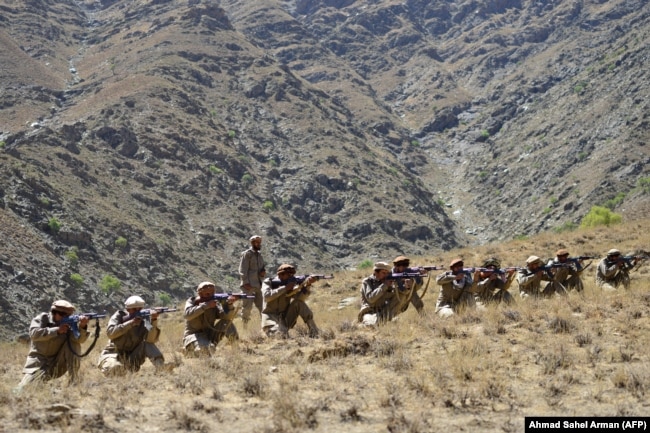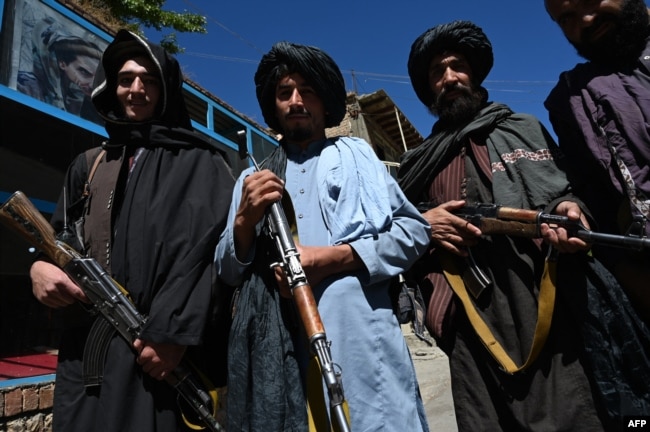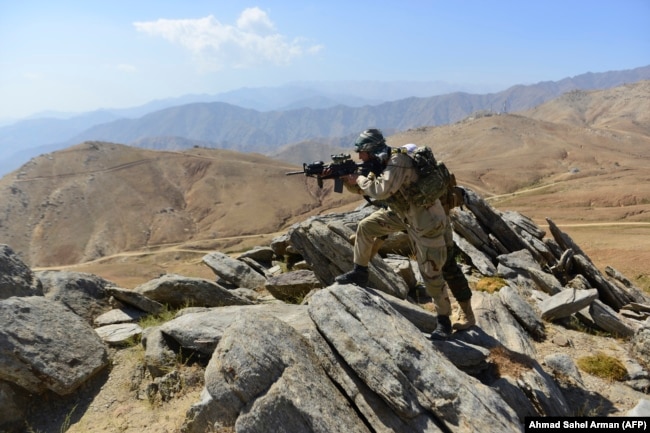
As the snows melted in the Afghan mountains, Taliban fighters hastened their attacks on officials and troops of the pro-Western Afghan republic and soldiers from dozens of NATO-led Western countries allied with it.
Now, in an apparent reversal of roles, factions of the fallen Afghan republic are claiming attacks on the Taliban in many provinces in what seems to be an uncoordinated spring offensive.
Those groups are tapping into vast reserves of potential guerrilla fighters from among the hundreds of thousands of Western-trained security forces that served the former government but lost their jobs after the Taliban takeover of Afghanistan eight months ago.
Former leaders of the West-backed republic hope the rebellion will eventually turn into a national uprising against what they view as Taliban rule that has repressed women and alienated ethnic and religious minorities.
They are also banking on attracting help from Afghanistan’s weary neighbors and global powers concerned by the return of terrorist groups to the country already reeling from rising violence by the radical Islamic State-Khorasan (IS-K).
The Taliban, however, considers the resistance small and insignificant.
“There is nothing that has improved since the Taliban seized power,” said a former official of the Afghan Foreign Ministry close to the emerging resistance. “I am sure we will see a much bigger uprising against the Taliban,” he added, requesting anonymity because of security fears.
One of the most visible anti-Taliban groups is the National Resistance Front, led by Ahmad Masud, son of the Northern Alliance leader Ahmad Shah Masud who successfully prevented the Taliban from overrunning Afghanistan until he was killed by Al-Qaeda assassins two days before the September 11 terrorist attacks in 2001.

Pakistan’s Deadly Air Strikes Inside Afghanistan Increase Tensions With Taliban
Former Vice President Amrullah Saleh, who like Masud hails from the northern province of Panjshir, is a close ally. The two left Panjshir in September, just weeks after the Taliban takeover of Kabul the previous month. But their supporters are still launching sporadic attacks against the Taliban in remote Panjshir valleys.
Supporters of former Interior Minister Masud Andrai have offered the most formidable resistance with somewhat regular attacks on the Taliban in Andrab, a high-altitude valley in the northern province of Baghlan.
One of the most significant attacks was in the northern city of Mazar-e Sharif last week when supporters of former warlord Atta Mohammad Noor clashed with the Taliban.
His nephew, Sohail Zmarai, was reportedly killed in an intense firefight that was acknowledged by the Taliban.
Some reports suggest the supporters of late anti-Taliban police commander Abdul Raziq are ready to join the resistance in Kandahar.
Attacks have also been reported in recent weeks in the Kapisa, Parwan, Badakhshan, Takhar, Ghor, Sar-e Pol, and Jawzjan provinces. The violence is distinct from the IS-K attacks that have mainly targeted Shi’ite mosques and schools in Kabul and several Afghan cities this month.
Former Defense Minister Bismillah Khan, ex-General Staff chief Yasin Zia, and Abdul Ghani Alipur — an ethnic Hazara militia leader — are other notable names in the resistance.
“The Taliban offered us nothing,” Ahmad Masud said in a video message last month, elaborating on how months of negotiations with the Taliban failed to secure a political agreement.
“They offered us two things: surrender and pledge allegiance [to the Taliban],” he said.

Afghan Farmers Fear For Livelihoods As Taliban Bans Opium
The Taliban’s rigid policies are apparently a reason for the increased armed resistance, with the various opposition factions claiming attacks against Taliban officials and fighters in several provinces.
“[Anti-Taliban] groups are popping up everywhere in Afghanistan,” the former Foreign Ministry official said. “They were just waiting to see how things would go under the Taliban.”
The official said former government leaders involved in the resistance are trying to unite behind a vision in ongoing negotiations. “Sometime soon there will be a conference in Europe,” he said.
Former government officials and leading warlords such as ethnic Uzbek leader Abdul Rashid Dostum, Hazara Mohammad Mohaqiq, Noor, and others have a long history of infighting, which might prevent them from posing a serious challenge to the Taliban.
There are also signs that former Afghan Army leaders are trying to rally their troops.
“The Taliban has left us no choice but to pick up our weapons again to win back our freedom,” former Lieutenant General Sami Sadat said.
Sadat fought some of the most challenging battles against the Taliban last year and was widely regarded as a capable military leader.
“We will take all practical steps for our homeland,” he added. “These include political and civic activism and military engagement.”
But the Taliban is not impressed.
“We can control these small and fragmented efforts,” Taliban spokesman Zabihullah Mujahid told Radio Azadi. “We have the intelligence to prevent and eliminate such efforts.”
Mujahid said that after four decades of war, Afghanistan is awash with weapons, which makes it easy to launch attacks. “Yet our forces are capable of providing security to the people and act against those trying to resist [our government].”
Kate Clark, the co-director of the Afghanistan Analysts Network think tank, said that although most drivers of war have not disappeared from Afghanistan, it is not clear whether it will lead to an armed opposition.
She points to the Taliban, which took years to regroup and recover from their ousting in late 2001 to reappear as an insurgency.
“The armed opposition that has emerged is in a relatively weak position by historical standards: it controls no territory next to a border [and] has no neighbor or great power obviously backing it,” she told RFE/RL.
Since the Soviet invasion of Afghanistan in late 1979, rebellions backed by foreign powers have succeeded in Afghanistan. The mujahedin forced the Soviet Union to withdraw from Afghanistan with generous funding and support from the West and Pakistan. And Afghan forces and their Western allies failed to eradicate the Taliban because of its safe havens in Pakistan.
Clark said that the failed republic is tainted in the minds of many Afghans because of widespread corruption and lackluster governance.
“The Taliban are more used to fighting than governing and would probably prefer armed ‘rebellion’ to mass civil disobedience,” she said.




